Just think if your favorite artist performed only their songs at a concert, it would get boring quickly.
The same principle applies to content creation. Instead of just producing your content, mix it up by curating and sharing relevant content from other sources.
This won’t only make your content more diverse and interesting, but it can also save you time and effort in creating original content.
Like why waste time and resources creating content from scratch when you can curate it?
What is Content Curation?
Content curation is about gathering, organizing, and presenting information from different sources.
It’s finding, filtering, and sharing relevant content that adds value to your brand or message.
You select the best and most relevant content related to your topic from various sources and present it in a meaningful way to your target audience.
For instance, if you run a food blog, you can curate recipes from other blogs or websites and share them with your followers.
You are not the original author of the content. Rather, you act as a curator, handpicking and showcasing the curated content.
Here, one thing that you can’t forget is giving credit to the original source and adding your own perspective or commentary to the curated content.
If you post the curated content as it is without any value addition, it’s considered plagiarism and can harm your brand reputation.
Benefits of Content Curation
Along with saving time and resources, there are some other advantages to content curation that are worth mentioning.
- First and foremost, curated content adds variety to your own content. This keeps the content fresh and hot to your audience engaged and gets you noticed.
- By curating content from reliable sources, you can establish yourself as a trusted source of information in your niche. To explain it further, when you share high-quality and relevant content from other popular, reliable sources, your audience is more likely to trust your own content as well.
- Curating content from others gives birth to a give-and-take mutual relationship between content marketers and creators. When you share their content, they are more likely to reciprocate and share your content as well.
- The most important one is that curating content saves time and effort. As mentioned earlier, why reinvent the wheel when you can gather and share valuable content from others?
5 Examples Of Content Curation To Inspire You
Anyone can do content curation, but not everyone does it well.
Here are some examples of brands and individuals that have leveraged content curation successfully to level up their content marketing game.
1. Starbucks
Our favorite green lady also relies on content curation.
Check Starbucks’s social channels, and you’ll come across many curated posts. And most of this curated content is made by people like you and me.
That’s why they are user-generated content.
They take the user-generated content from their Instagram, Twitter, and Facebook and then share it on their profiles with a little bit of modification to match their brand aesthetic.
For example, here’s a curated content posted on Starbucks on Twitter during Halloween. Trick or treat turned cute with Starbucks’s touch.


Starbucks assembled images of little kiddos dressed as Starbucks coffee drinks or employees from Facebook and shared them on their Twitter profile.
Halloween was done right. People engaged with cute posts, and Starbucks shared the festival vibes without much effort. And since they shared user-generated content, it felt authentic and genuine.
A perfect content curation strategy!
2. CyberLeads


CyberLeads is a lead generation agency that helps freelancers and businesses find clients from the startup world.
You sign up for their list, and every week, you get an Airtable spreadsheet with some of the latest SaaS and tech companies that just got a solid round of funding.
CyberLeads provides value by curating very specific information that caters to a particular audience, i.e., people and businesses looking for high-paying clients who have the funds to invest in outsourcing.
This is a simple form of curating – Alex sends a weekly email blast and adds a link to an Airtable sheet. It’s focused on value without too many bells and whistles. Use this as a great curating example you could follow.
3. Glimpse
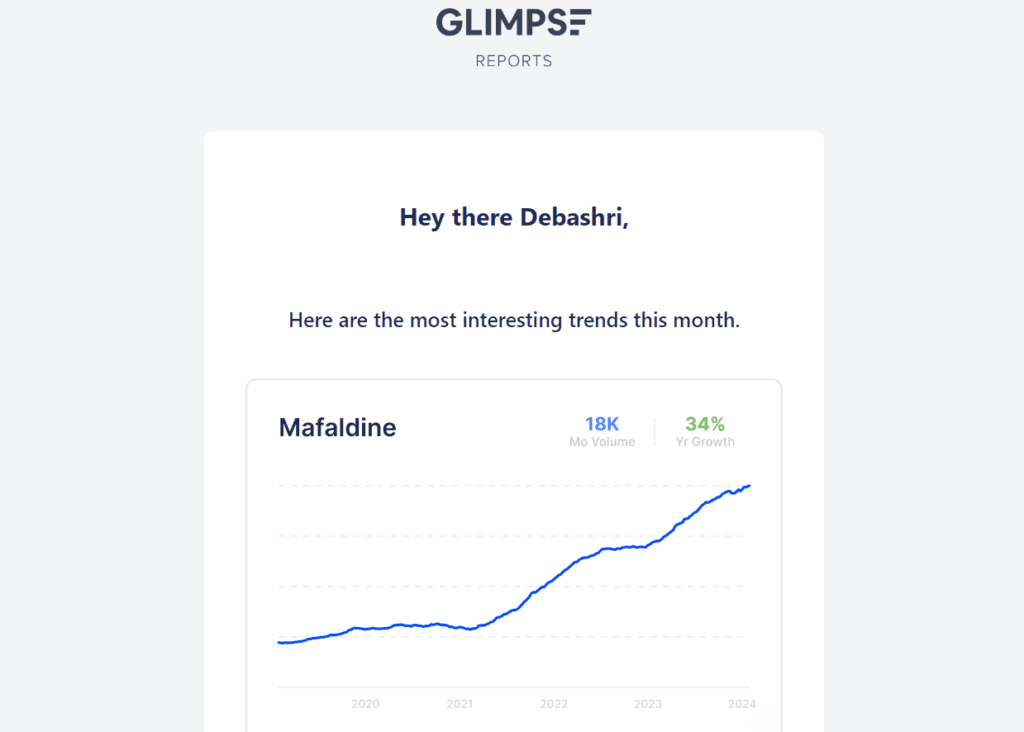

Glimpse is a trend discovery tool that works with Google Trends. You can sign up for free and ‘supercharge’ your Google Trends results.
And you also get a monthly report that curates the latest trends and topics that are about to blow up.
If you choose to invest in its premium edition, you get access to more data and opportunities to grow your business by tapping into what people are searching online. But the real value here is that Glimpse shares the information before it becomes popular. In this way, Glimpse curates hard-to-find information and helps its audience.
It also acts as a regular reminder that you should invest in its premium version. Hence, it’s a clever way to link curating content to driving sales.
4. BuzzFeed
The constant source of everything trendy, catchy, and relatable, BuzzFeed is your Savvy Content Curator, living, breathing content curation.
They have different sections for different types of curated content – from news and celebrity gossip to quizzes, lists, and videos.
BuzzFeed’s main focus is creating viral-worthy content, and they do it by effectively curating content from various sources.
How does the curation strategy work for them?
They gather popular content from all over the internet and give it their own spin.
For example, they created the popular series “Tasty” by curating cooking videos from different sources and adding their own unique style to them.
Then there are the infamous “listicles,” which are essentially curated content from various sources but arranged in BuzzFeed’s list style.
Their posts like ’19 Wholesome Posts That Will Restore Your Faith In Humanity’ are such listicles entirely built on curated content.


Like Buzzfeed nowadays, many sites like ScoopWoop, StoryPick, etc. have taken up this curated posts approach for their audience.
They put together even Tweets or Tumblr posts from various accounts like an article. Make some edits of their own and give it a twist to suit their website.
All in all, BuzzFeed’s curation game is on point, and if you’re looking for inspiration to step up your content curation, they are the perfect example to follow.
5. GoPro
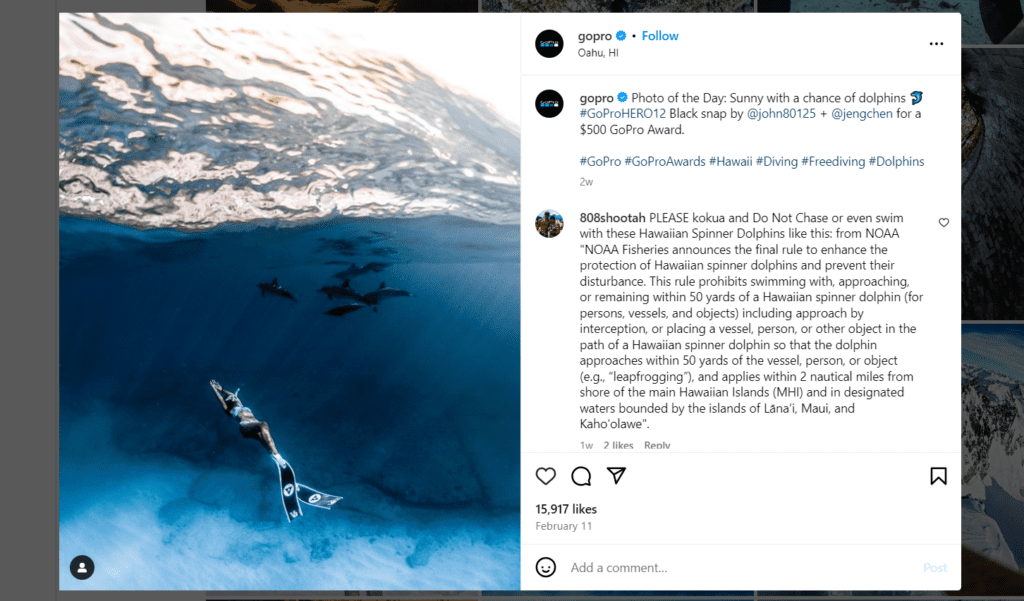

GoPro’s Instagram page is a prime example of successful content curation.
They take user-generated photos and videos captured using their cameras and share them on their Instagram profile, giving credit to the original creators.
This not only showcases the capabilities of their product but also creates a sense of community among their followers, as they feature everyday people using their cameras in extraordinary ways.
GoPro actually collects the best photos and videos and then chooses the best ones to feature on their page. This way, they ensure high-quality content while also giving recognition to their customers.
6. Airbnb
Check out Airbnb’s Instagram page and you’ll understand why they are included in this list.
They curate stunning images of different destinations and accommodations from all around the world, making their followers dream about their next vacation.
Users from all around the world send Airbnb pictures of their properties, and they pick the best ones to feature on their Instagram page.
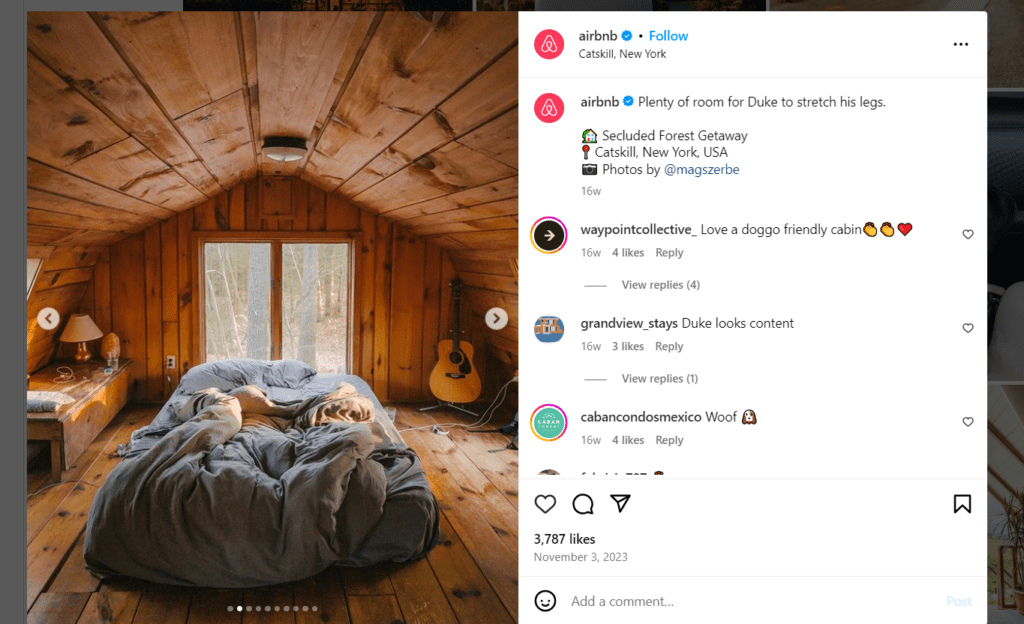

The pictures submitted are not always from the ones who have stayed in the property, but even professional photographers who capture the essence of an Airbnb accommodation.
Not only does this showcase the unique experiences that Airbnb offers, but it also promotes user-generated content and creates a sense of community among its followers.
This supports and showcases the work of talented individuals. Making it a win-win situation for both Airbnb and the content creators.
7. The Marginalian (Formerly Brain Pickings)
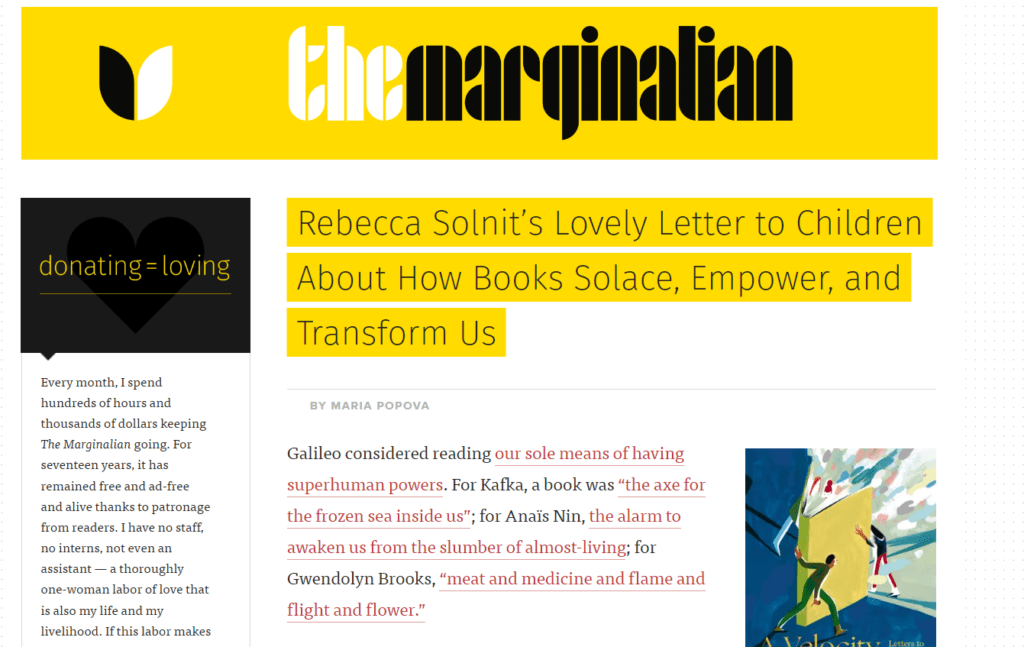

Works like BuzzFeed, but the site revolves around the central theme of intellectual content.
It’s a website that curates content from books, articles, videos, and talks on different topics like culture, creativity, literature, etc.
The curation process involves finding the best quotes and passages from various sources and creating an inter-connected article around it.
In each of their articles, you’d find quotes from various personalities and different books, all creatively connected to form a cohesive piece.
Not only is this an innovative way of curating content, but it also adds value to the original content by introducing it to new audiences.
The Marginalian team has perfected the art of content curation, and their website stands as proof of it.
5 Content Curation Platforms Examples
To begin with content curation, you first need to find sources for curated content. Here are some popular content curation platforms you can use:
Social Media Platforms
The first and foremost on our list are social media platforms like Facebook, Twitter, LinkedIn, and Instagram.
You can follow relevant pages, groups, or hashtags to find interesting and trending social media posts in your niche. Share this content with your audience while giving credit to the original source.
For example, you run a fashion blog and come across a beautiful outfit on Instagram. You can share the post on your own page with your personal style tips or opinions added in the caption.
You don’t always need to share posts from other users, you can also curate your own social media posts by repurposing them according to your content marketing strategy.
Like you must have come across a lot of videos or reels on Instagram, you can compile the top 5 or 10 videos and create a “best of” post for your own page.
Many CEOs also use social media for content marketing of their products. Take, for example, Anand Mahindra, the chairman of Mahindra Group, who shares interesting and inspiring content on his Twitter page which is curated from various sources.


In one of his X (formerly Twitter) posts he promoted the capabilities of Mahindra Motor’s creation Thar. He shared a viral video of Thar speeding away in flooded roads in turn highlighting its off-roading capabilities and comparing it to other SUVs.
This not only created a buzz around the product. But also created a relationship of trust between potential customers and the brand.
Pinterest is another popular platform for content curation.
It’s a visual discovery engine where users can find and save images, videos, and links related to their interests on virtual boards.
You can create boards related to your niche, like “Healthy Recipes” or “DIY Home Decor Ideas,” and pin relevant content from other sources, including your own blog posts.
It’s basically a visual representation of a curated collection of content that you can share with your followers.
You can also share curated content from Pinterest on other social media platforms or use it as a source for visual inspiration.
Or else you can just draw inspiration and create your own original content. For Pinterest, you don’t even need to credit the original source since it’s a visual platform, and you are not using their content directly.
Daily Skimm
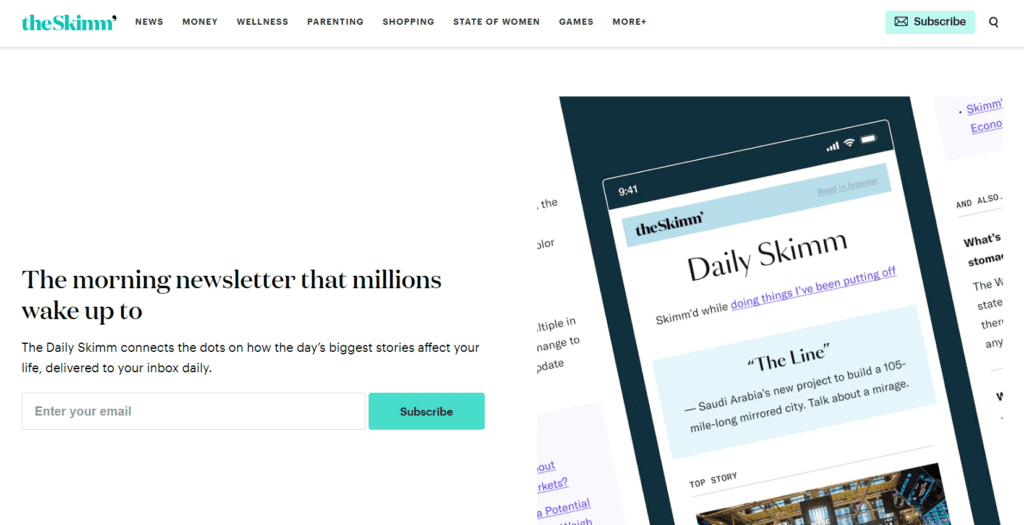

Daily Skimm is a daily newsletter that curates the top news stories of the day and presents them in a concise and easy-to-read format.
Whether about the World Cup or Olympics or awards, there are some major events about which a lot of people want to know but don’t have the time to search through numerous news articles.
Here comes content curation platforms like Daily Skimm.
This app curates news for you. If you don’t have much time to keep up with current events, you can skim through this newsletter every morning to get a gist of what’s happening worldwide.
Suppose you want to align your social media marketing posts with current events, Daily Skimm can be a valuable source for curated news content.
You can subscribe to their email list or follow them on social media to stay updated with the latest
You don’t actually get to share the entire newsletter; instead, select and share the most relevant snippets or links from the newsletter.
Flipboard: The Social Magazine
This is pretty much two-in-one – partly like Pinterest, partly like Daily Skimm. Flipboard is also a news content curation platform.
Based on your interests, this app curates the most popular articles, news stories, and videos from various sources.
All you have to do is select the topics that interest you. Like on Pinterest, you can create boards, here on Flipboard, you can create “Magazines” where you can collect and save interesting content and then share it with others with your insight.
Say you own a travel blog, you can create a “Best Travel Articles” magazine on Flipboard and share it with your followers.
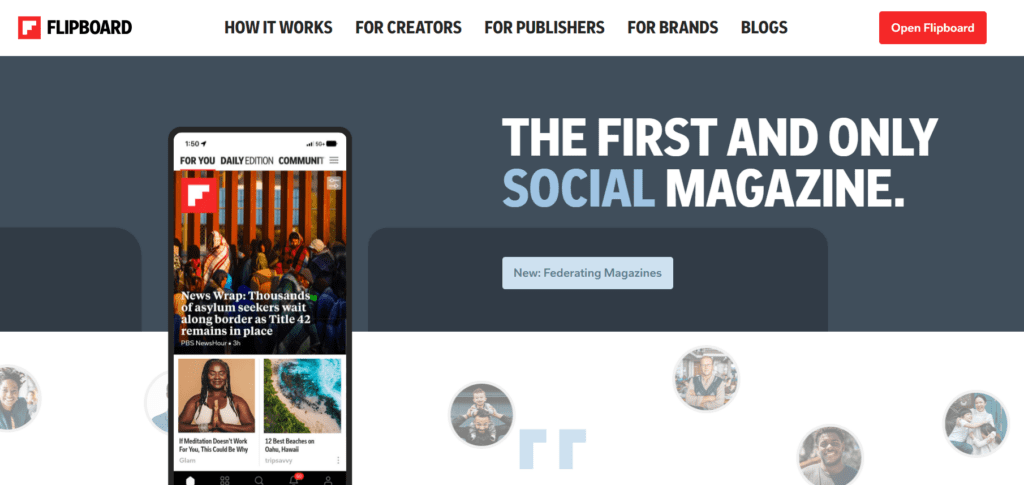

For content marketing purposes, if you want to stay updated with the trends or just draw inspiration, Flipboard is a good platform to use.
Want to directly share the content from Flipboard to your brand’s social media profile? Sure, you can do that too.
Flip through the news, and share what you like along with your brand message on your social media or website.
Tumblr
This list of examples of content curation platforms would be incomplete without mentioning Tumblr.
It’s similar to Pinterest, yet not so similar.
How? Well, it’s microblogging, where users can share various types of content like text, images, videos, and links.
The difference is Tumblr isn’t just limited to images or videos, it’s a more versatile platform as you can also blog on Tumblr.
Whether images, videos, poems, or quotes, whatever form of content you appreciate and want to share with your audience can be easily found on Tumblr.
Now, how does it help with curating content?
All you have to do is either reblog the posts from others’ Tumblr blogs on your own page or share the original post link with your own insights.
You can always get ideas from the best content on Tumblr and create your own fresh content as per your brand’s tone and voice.
Best Content Curation Tools
Scrolling through social platforms or searching different blogs to find the best stuff is not today’s deal.
Now, you can use some of the best content curation tools and make your job easier.
- Scoop.it: This tool allows you to search, curate, and publish content on your blog or social media platforms. Using its features like keyword filters and content suggestions, you can easily find relevant content to share with your audience. Plus, it lets you collaborate and share your curated content with team members.
- Feedly: Hands down, the best content curation tool out there. But it curates news from different sources. Add your favorite sources and topics, and Feedly will let you aggregate the latest content from those sources for you.
- RSS Feeds: Really Simple Syndication or Rich Site Summary, whatever you want to call it. It’s a web feed that helps users to access updates to online content in a standardized format. To explain it simply, it’s like subscribing to a magazine where you get the latest issues delivered to your doorstep. Similarly, with an RSS feed, you can subscribe to websites or blogs and get their latest updates in one place.
- X Lists ( Previously Twitter Lists): From the name itself, you can understand that it isn’t for all social channels. However, it is a great example of content curation tools. Using this you can create and add certain Twitter users into lists and keep track of their tweets. Say you want to follow the tweets from different digital marketing specialists, you can create a list and add them there. This way you’ll only see the tweets related to digital marketing without getting distracted by other posts on your Twitter.
- Trapit: As the name suggests this one traps all your current trends, stories, and news. You can create your own “traps” where you save articles or posts related to your interests, so when you’re ready to share content on your social media, all the relevant content is in one place.
Take It From Here
Today, imagining a content marketing strategy without content curation is like trying to bake a cake without the main ingredient.
It plays a crucial role in providing valuable, relevant, and interesting content to your audience.
Not only does it save time and effort in creating original content, but it also helps to build a community and establish your brand as a reliable source of information.
So try your hand at content curation if you haven’t already.
Who knows, it might be the missing piece in your content marketing puzzle!







